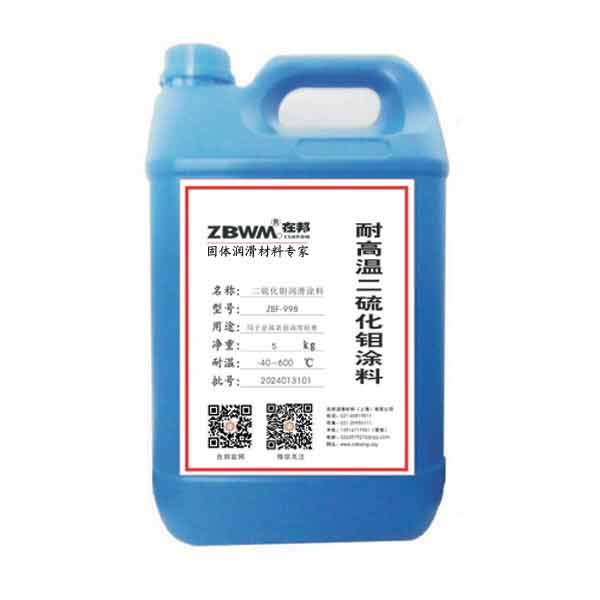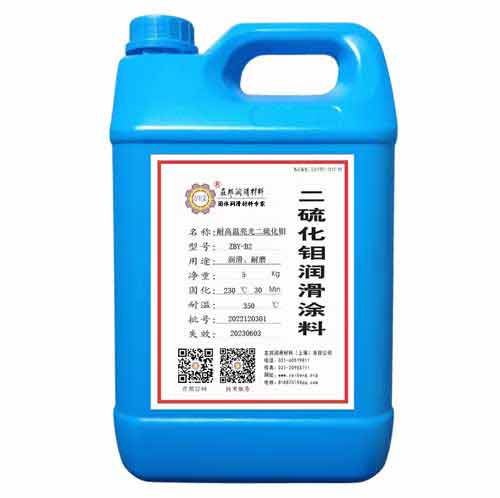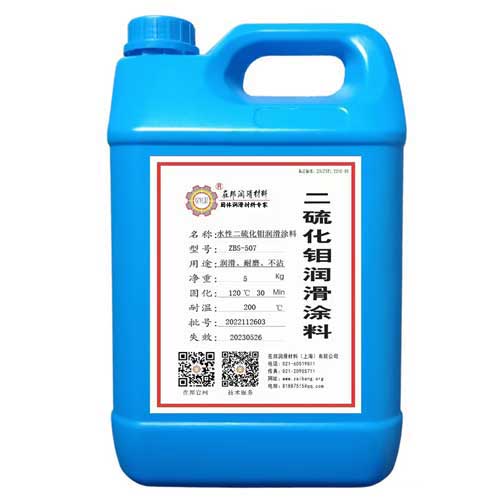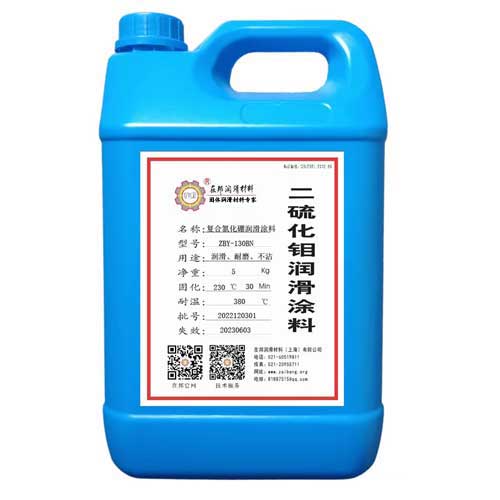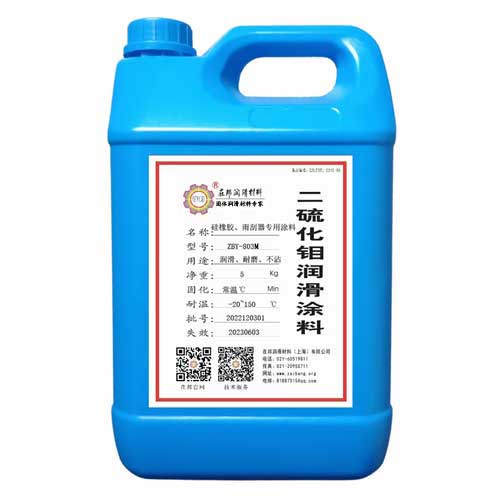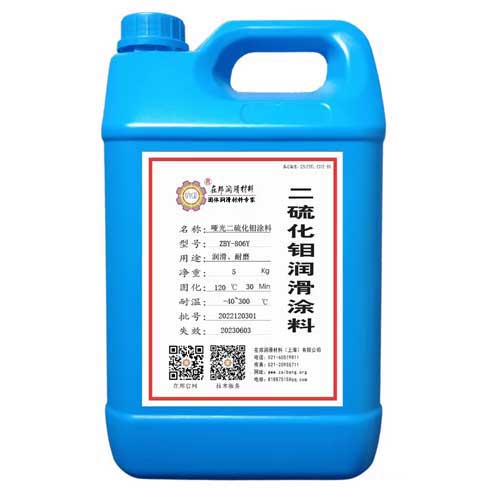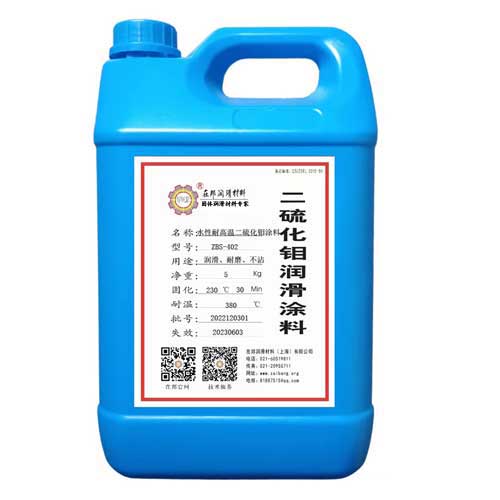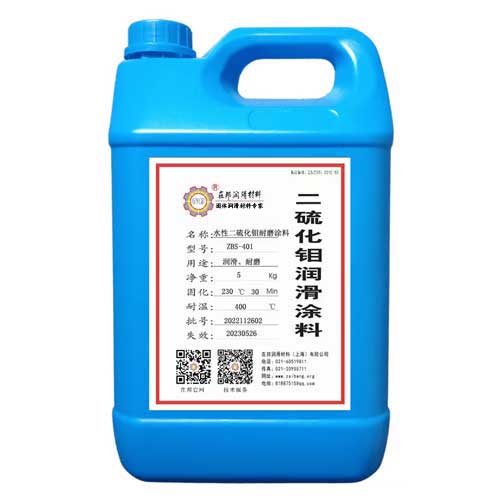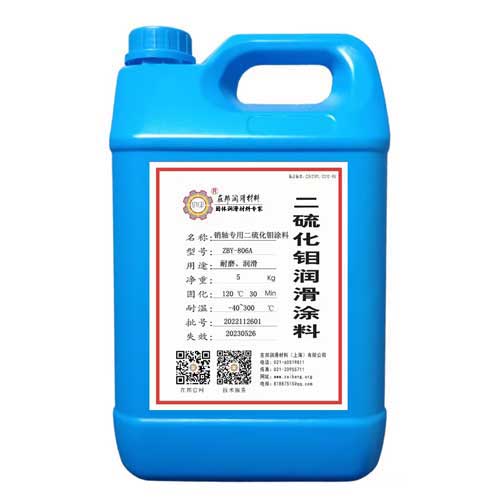ZBY-998 High temperature resistant molybdenum disulfide lubricating coating
2024-01-31 16:10:07
- Brand MoS2 coating
- Model ZBY-998,1kg、5kg
Introduction
1. Product IntroductionThis product is mainly made of molybdenum disulfide and inorganic silicone resin, mixed with high-efficiency film-forming additives and other materials. Has excellent high temperature resistance, wear resistance, lubrication, and high adhesion. It can be applied to the surface of substrates such as alloy aluminum, alloy copper, stainless steel, and iron. The coating has the functions of temperature resistance, wear resistance, lubrication, and self repairing micro pits.
Curing temperature: 80 ℃ for 10 minutes+180~280 ° C for 10 minutes
Temperature resistance of coating: -40~600 ° C (intermittent 800 ° C)
Paint type: solvent type
Diluent: Special mixed solvent (ZBY-988X)
2. Application scope
Applied to the surface of substrates such as alloy aluminum, alloy copper, stainless steel, and iron.
3. Use Cases
High temperature environment components
4. Product indicators
Color/code: gray black
Gloss: Slightly glossy or matte
Quality solid content: 35 ± 5% PH: 7 ± 0.5
Viscosity: 32 ± 2 S (Cai En 2 # cup)
Dry film: 20-40 μ M
Theoretical coating rate: 0.15-0.20kg/ m2@30 μ M dry film thickness
5. Construction conditions
Environmental temperature: minimum 10 ℃
Environmental humidity: 30% -70%
Construction methods: brush coating, roller coating, air spraying, immersion coating.
6. Operation guidance
6.1. Surface treatment of substrate
6.1.1. Degreasing: The surface and gaps of the workpiece must be cleaned of oil stains.
6.1.2. The substrate needs to be sandblasted (using 80-100 grit quartz sand), and the surface roughness should reach 40-60 microns.
6.1.3. Use compressed air to blow off sand particles and dust on the surface of the substrate. If solvent immersion or cleaning is required, the surface liquid must be air dried or dried.
6.1.4. Place the workpiece in the oven for preheating, with a temperature controlled at 60-80 ° C (the optimal temperature needs to be determined based on actual working conditions), and keep it warm for 30-60 minutes or more for spraying.
6.2. Preparation of Spray Equipment Before using the spray equipment, it is necessary to thoroughly clean the relevant equipment, such as spray guns, spray pots, or paint cans. The recommended cleaning process is as follows:
6.2.1. Thoroughly clean the equipment with a diluent that matches the original paint to remove any remaining paint and residue inside.
6.2.2. Use specialized diluents or other soluble solvents to repeatedly clean the equipment (clean for more than 2 cycles).
6.3. Preparation of Coatings
6.3.1. Dispersion: Before using the coating, stir for 5-10 minutes, add an appropriate amount of diluent according to the actual situation, then test its viscosity and make the coating evenly dispersed.
6.3.2. Filtering: The paint entering the spray can must be filtered with a 100 # filter screen to remove any solid substances that may be mixed in, in order to avoid gun blockage or the formation of particles on the surface of the workpiece.
6.3.3. When using the paint, adjust it again. The prepared paint should be used up in one go during construction.
6.4. Coating spraying: Use a spray gun with a nozzle diameter of 1.0~1.5mm and a spraying pressure of 2~0.3MPa (2~3kgf/cm2). During spraying, control the distance between the nozzle and the substrate to be kept between 15~30cm.
6.5. Drying and curing: Keep at 80 ° C for 10 minutes, and heat up to 180-280 ° C for 10 minutes.
6.6. Cooling method: After the workpiece film layer is solidified, both furnace cooling and air cooling methods can be used for cooling. Please note that the uncooled film layer is in a soft film state, which is not easy to touch or collide with, and does not have the aforementioned properties.
7. Precautions
7.1. The workplace must have good ventilation.
7.2. During the use of paint, the container containing the paint should be covered with a lid, sealed for use and storage.
7.3. This product may become unstable during temperature changes. Please store at around 25 ℃ and regularly (about 1 month) gently stir or shake this product at 25 ℃ to prevent sedimentation and condensation.
7.4. During normal spraying and back spraying, the surface of the workpiece must be sprayed and wetted, and there should be no drying phenomenon.
8. Storage conditions
8.1. Avoid direct sunlight at a temperature of 25 ℃ and store for 12 months (unopened).
8.2. Packaging specifications: 1kg, 5kg.
9. Waste discharge
9.1. It is recommended to clean the spray gun, sprinkler, and equipment with a diluent. The washed diluent can be filtered and stored for use in the next adjustment of paint viscosity.
9.2. Do not discharge the paint and its cleaning residue into the wastewater system. It must be stored in a specific container and professionally treated in accordance with local and national environmental laws and regulations.
10. Emergency handling
10.1. If there is a leak or overflow, rinse thoroughly with plenty of water.
10.2. If this product accidentally enters the eyes, immediately rinse with plenty of water for at least 15 minutes. If you feel pain, please seek medical attention immediately.
10.3. If this product comes into contact with the skin, please wash with water and soap. If you feel uncomfortable, seek medical attention immediately.
10.4. If you accidentally inhale the spray and feel uncomfortable, immediately transfer to a place with fresh air and seek medical attention.
More Products

